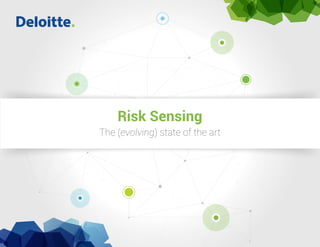The document discusses the state of risk sensing capabilities in large organizations based on a survey conducted with 155 executives. Key findings include:
- Most companies report having risk sensing capabilities, but they are more focused on financial, compliance, and operational risks rather than strategic risks.
- About two-thirds of executives agree their organizations have the right people to analyze risk sensing data, but one-third are less certain.
- The risks executives view as most important are shifting, and external perspectives on risks may warrant further consideration.
The document provides an overview of effective risk sensing practices and characteristics for organizations to develop robust risk sensing programs that identify emerging risks.













